Here we are, Saturday, April 13. This day we got help from my nephew, who drove down from Fargo, ND to help us out for two days. This day’s planned and actual activities ended up a bit different. The plan was to remove the lath and plaster of the small room’s ceiling and do demo-debris cleanup, followed by construction activities.
The reality worked out a bit different. After we had removed the lath and plaster ceiling, we started looking a bit more in-depth at the wall that separated the room from the stairway area. What we found was that the wall was not constructed right. Here are some of the things that were wrong with it:
- The studs were turned 90 degrees, basically reducing the width of the wall to half the normal size.
- The studs were not placed at the standard 16-inch on-center spacing. It was more like 30-40 inch on-center
- The wall was ‘secured’ to the ceiling joists with a total of 4 nails (the wall is over 8-feet long)
- The electrical installation in the wall was done wrong. The boxes used were open-back extension boxes and the wiring was not properly routed through holes in the studs, instead they were squeezed in between the stud and the paneling.
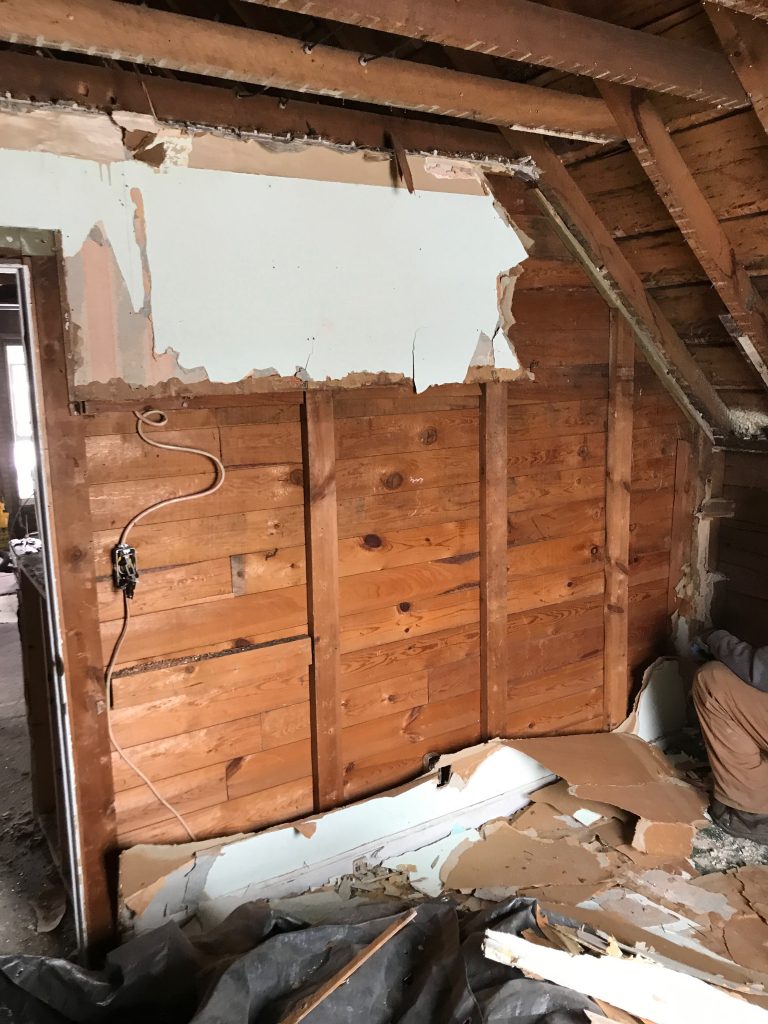
In this picture you can see a number of the things wrong with this wall.
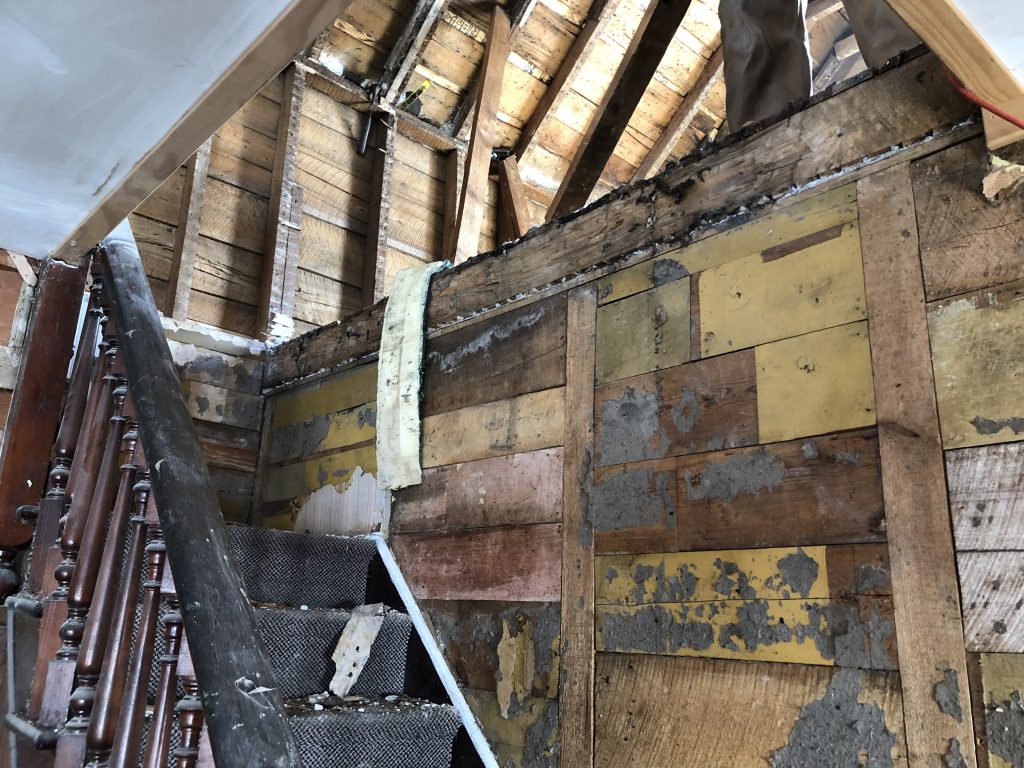
We ended up taking the wall down, which required the use of a single crowbar pull.
With the wall gone we had to decide wheter or not to build a replacement wall or to keep it open.
The decision was to keep it open, since it allowed for the flexibility to leave it open or to put wall in later.
As a result of that decision, we had to build a railing around the stairs. This is what it looks like now.
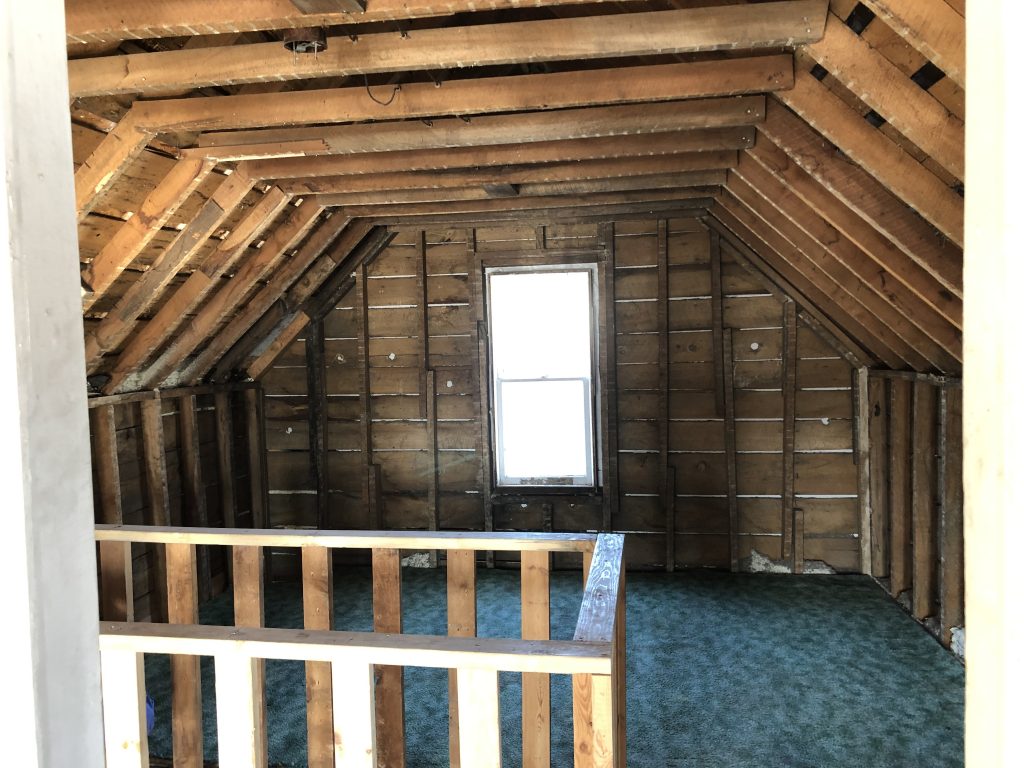
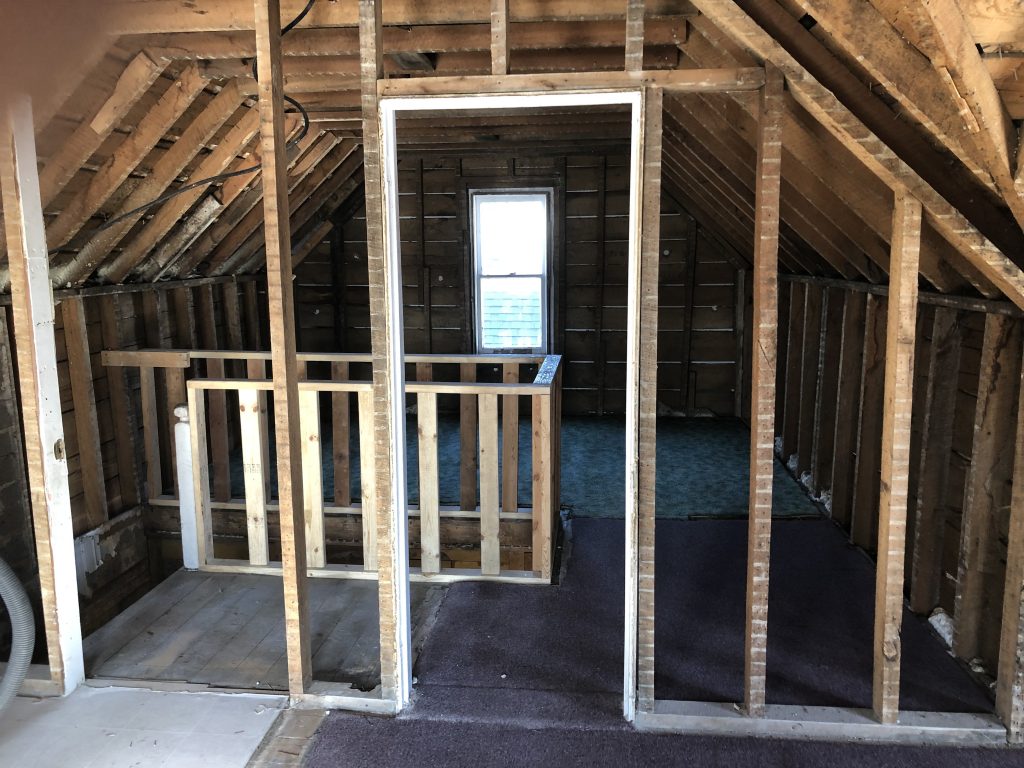
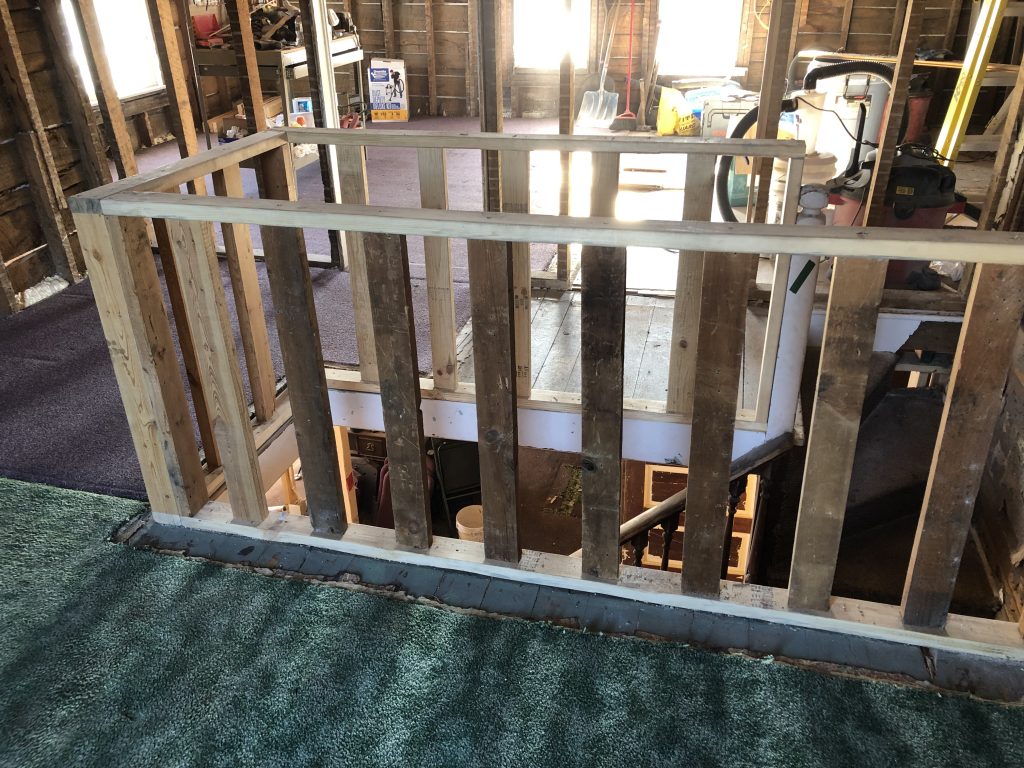
A lot of lumber was salvaged during the demolition of the second floor. The lumber had a lot of nails. My friend ended up removing these nails, while I was building the railing around the stairs. This railing was made out of a combination of new and old lumber. The old lumber was used for the vertical stiles, and was reclaimed from the half-thickness wall and the ‘drywall-wall’. The new lumber was used for the top and bottom horizontal rails.
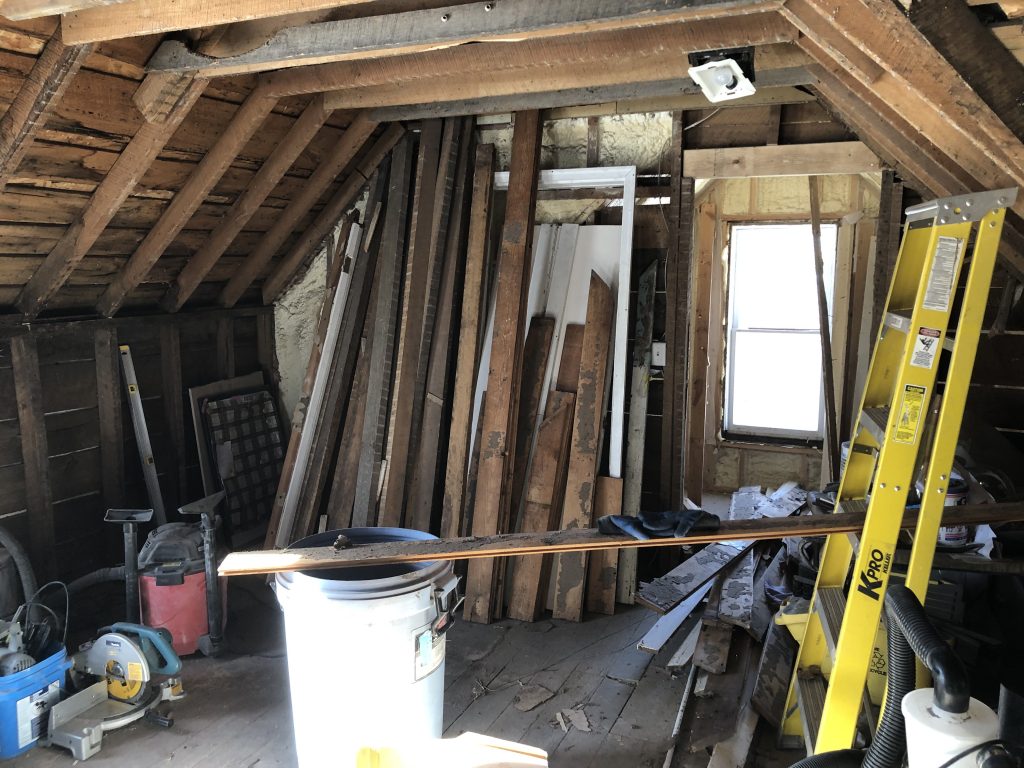
The final result of the day was that all the demolition work in the kenwoodstreet project was completed. From this point forward we are in construction-mode only. This is quite a milestone after more than 4 1/2 years into this project.